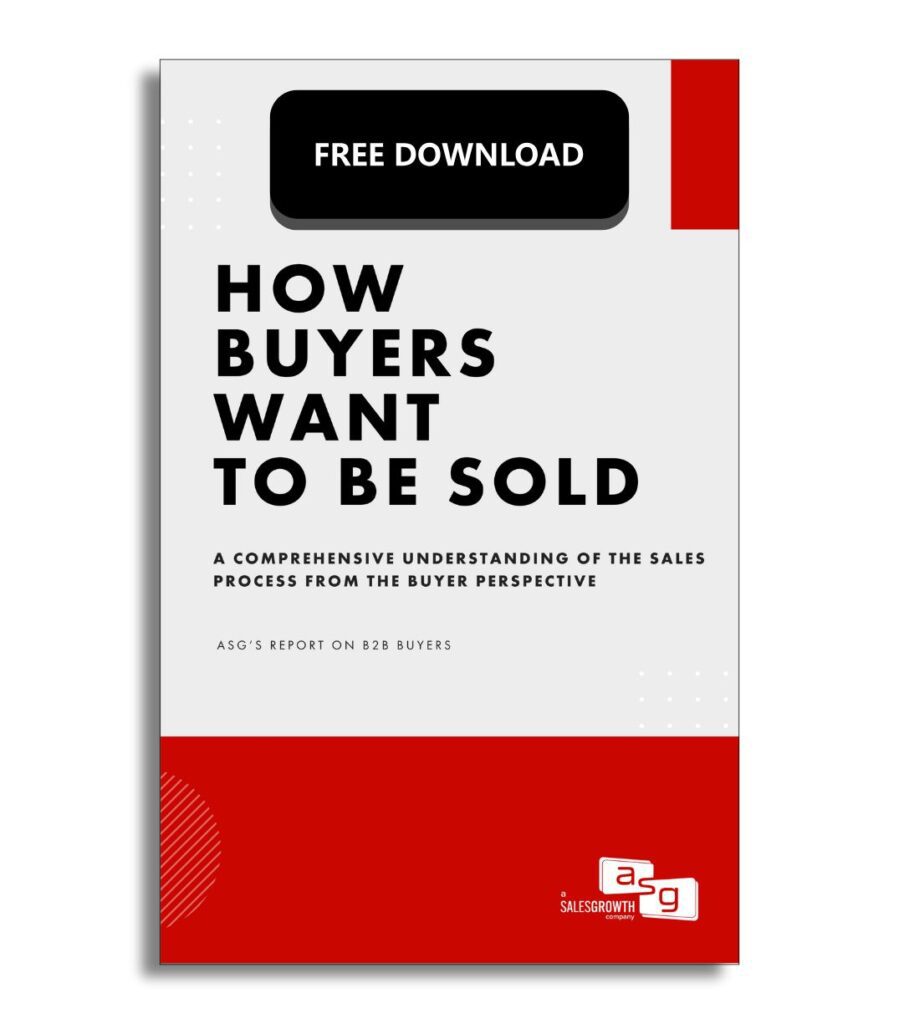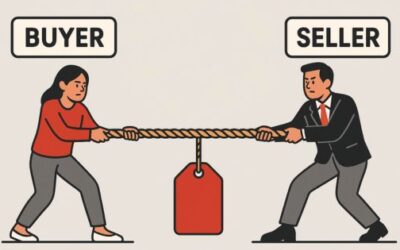Salespeople don’t lose deals because of price. They lose because they fail to make buyers care about the value. Shaving a few bucks off the bottom is not what wins a deal. What wins is when a salesperson can present the solution in a way that screams “this is going to change your business.” 86% of buyers will pay full price is the value is present and clear. If your teams keep getting squeezed on price, it’s not the buyers, it’s you. Let’s break down why discounting is killing you and how to adjust your strategy by anchoring every sale in the value you bring.
Defining the Problem
Dropping prices might feel like the fastest way to get the deal done, but all it does is tell your buyer – I don’t believe in the value of what I’m selling. If you don’t believe in it, neither will your buyer. The moment price becomes a battle, you’ve already lost.
Buyers will pay. They’ll pay more than you think, if you can prove that value. 74% of buyers are willing to blow past their budget if the value is presented properly and clear. So, why do so many sales teams crumble under price pressure? Because they’re not selling to the problem. They’re selling a product. And no one cares about your product – they care about what it fixes.
Every time you knock a few dollars off a deal, you’re training buyers to think price is negotiable. The more you do it, the harder it gets to break the cycle.
Why Sales Teams Default to Discounts
Sales teams don’t cave on price because they enjoy shrinking deal sizes, they do it because they don’t know how to anchor the sale in the buyer’s world. When the conversation drifts to price, it’s a sign the salesperson never dug deep enough to uncover the real problem. If you can’t tie the solution to a critical business issue, price becomes the only thing left to negotiate.
Most salespeople get stuck pitching features. They talk about what the product does instead of what it fixes. Buyers don’t care that your software has 12 new integrations or that your platform updates in real-time. What they care about is how those things solve the problems that keep them up at night. If you’re not solving something painful, you’re selling a commodity.
The problem gets worse when sellers skip proper discovery. When you don’t understand the buyer’s current state, you can’t sell he future state. Without that gap, there’s no urgency, no value, and no reason for the buyer to pay full price. Discounts become the lazy way out. Instead of closing by solving problems, sellers close by racing to the bottom.
The worst part is it works, temporarily. But, every discounted deal sets the tone for the next one, now the buyer expects it, and just like that you’ve conditioned them to wait for the price cut.
Causes of Price Pressure
If buyers are hammering you on price, it’s because they don’t see the problem are big enough or painful enough to justify the full cost. That’s your fault, not theirs.
The root of the issue? Product-first selling. Too many salespeople lead with features and benefits instead of diving into what’s broken in the buyer’s world. When the focus is on the product, the price becomes the buyer’s only lever to pull. But when the focus in on the problem, prices becomes secondary to solving it.
Here’s what’s happening:
Buyers aren’t convinced the problem is urgent. If they can live with the pain, they’ll push for a cheaper solution, or they’ll just with it.
Salespeople rush the discovery. They check boxes instead of exposing the costs of the buyer’s current state. If the buyer doesn’t feel the weight of the problem, the won’t feel the value of the solution.
The gap isn’t clear. Without a gap of where the buyer is now and where they want to be, the solution will feel like a nice-to-have and nice-to-haves get discounted.
Buyers don’t mind paying. They’ll pay 10-20% over budget if the problem feels big enough. But you have to show them. If the buyer doesn’t feel the problem, the salesperson isn’t doing their job.
Shifting to Problem-Based Selling
Buyers will pay full price every time if they understand the weight of their current state. If the problem is big enough, urgent enough, and costly enough, price is no longer an issue.
So how do we stop this? You shift from product to problem. Rather than pitching how great the product is you focus on diagnosing what’s broken and what it’s costing them right now.
Dig Deep in Discovery
Stop accepting the first answer buyers give you. “We need better reporting” isn’t the problem. Why do they need better reporting? What happens if they don’t have it? How much time is wasted, how much revenue is slipping through, and what’s the downstream impact?
Steer the conversation with questions that force the buyer to reflect.
“How does this typically play out for your team?”
“What happens downstream when this slips through?”
“How often does this cause delays or rework?”
“Who else gets pulled in to fix these issues?”
We want to help buyers uncover the impacts for themselves, when they start connecting the dots, urgency builds naturally.
Quantify the Cost of Inaction
If you don’t show them the price of their current state, they’ll make the price of your solution the problem. Break down what the problem is costing them in real numbers – wasted resources, missed revenue, inefficiency. If the cost of doing nothing is bigger than the cost of your solution, you win.
Frame it clearly: “Right now, this issue is costing you $250k annually. Our solution costs $85k. How long are you comfortable bleeding that $250k?”
Stop Discounting, Start Diagnosing
Buyers don’t fight over price when they feel the pain of their current state, they instead fight to solve the problem. Discounting is not a pricing strategy, it’s a symptom of weak discovery. If price is a sticking point in your deals, it’s because the buyer doesn’t believe the problem is big enough or costly enough to justify the solution.
Fix the discovery, and you fix the sale.
When you guide buyers to uncover the hidden costs of inaction and let them build the vision of their future state, price become secondary. The sale stops being about features, and starts being about the gap – the space between where they are now and where they need to be.
If you want to stop cutting deals to hit quota, stop selling products and start selling solutions to problems that matter. The bigger the problem, the bigger the gap. The bigger the gap, the bigger the deal.
Hold the line. If the problem is real, they’ll pay.




0 Comments